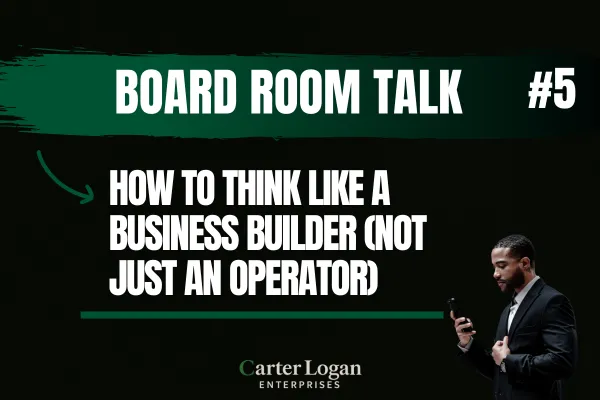
How to Think Like a Business Architect (Not Just an Operator)
Because building the business and running it are two different skill sets.
Introduction: You’re Stuck in the Weeds Because You’re Thinking Like a Worker
You wake up in the business.
You answer emails. Put out fires. Do client work. Check your bank account. Try to post on Instagram. Squeeze in a little strategy—then crash at midnight.
Sound familiar?
That’s operator mode.
And it’s the exact reason your business can’t grow beyond you.
Operators run the day-to-day.
Architects design what the business should become.
And if you don’t start thinking like a business architect, you’ll stay stuck in a loop of stress, survival, and small money—no matter how hard you work.
Let’s fix that.
Operator vs Architect: The Key Differences

Why Most Entrepreneurs Stay Stuck in Operator Mode
It’s not because you’re lazy.
It’s because that’s what you were taught.
You were told:
Hustle harder
Work longer hours
Learn every role
Be the “CEO” but act like the janitor
Truth is:
Hustle is useful in the beginning
But eventually, you need systems that replace your energy with infrastructure
You don’t scale by doing more—you scale by designing better.
How to Start Thinking Like a Business Architect
1. Build With the End in Mind
Ask yourself:
If I sold this company tomorrow, what would a buyer want to see?
If I stepped away for 30 days, what would break?
Start building now as if you’re preparing for that handoff. Even if you never sell, this mindset creates clarity and structure fast.
2. Map the Business Model Like a Blueprint
Stop “winging it.”
Lay out your business in clear, structural pieces:
Lead generation
Sales process
Offer packaging
Delivery & fulfillment
Retention / Upsell
Financial controls
Team roles
If it’s not documented, it doesn’t exist.
If it only lives in your head, it can’t scale.
3. Use Systems to Replace Repetition
Every time you say, “I’ll just do it real quick,” you kill scale.
Architects ask:
Can this be templated?
Can this be automated?
Can this be assigned?
If the answer is yes—you’re designing freedom.
If the answer is no—you’re designing dependency.
4. Delegate Outcomes, Not Just Tasks
Operators give people instructions.
Architects give people ownership.
Stop hiring people to “help.” Start hiring people to own outcomes.
Give them:
Clear metrics
Clear SOPs
Decision-making authority within their lane
You shouldn’t have to babysit.
You should be building leaders who build the machine with you.
5. Think in Frameworks
Architects think in repeatable structures, not random tactics.
Examples:
Offer Framework
Client Journey Framework
Fulfillment Framework
Weekly Ops Rhythm
Financial Dashboard System
Frameworks reduce decision fatigue.
They create consistency, speed, and scale.
If it’s working but not structured, it’s fragile.
Final Word: Start Acting Like the Architect Your Business Needs
You don’t need more productivity hacks.
You need to stop playing the worker role in a company you’re supposed to own.
Shift from:
Solving problems → Designing systems
Doing the work → Architecting the machine
Running the day → Building the engine
You’re not just the CEO. You’re the architect of the entire business.
Act like it. Design like it. Lead like it.
